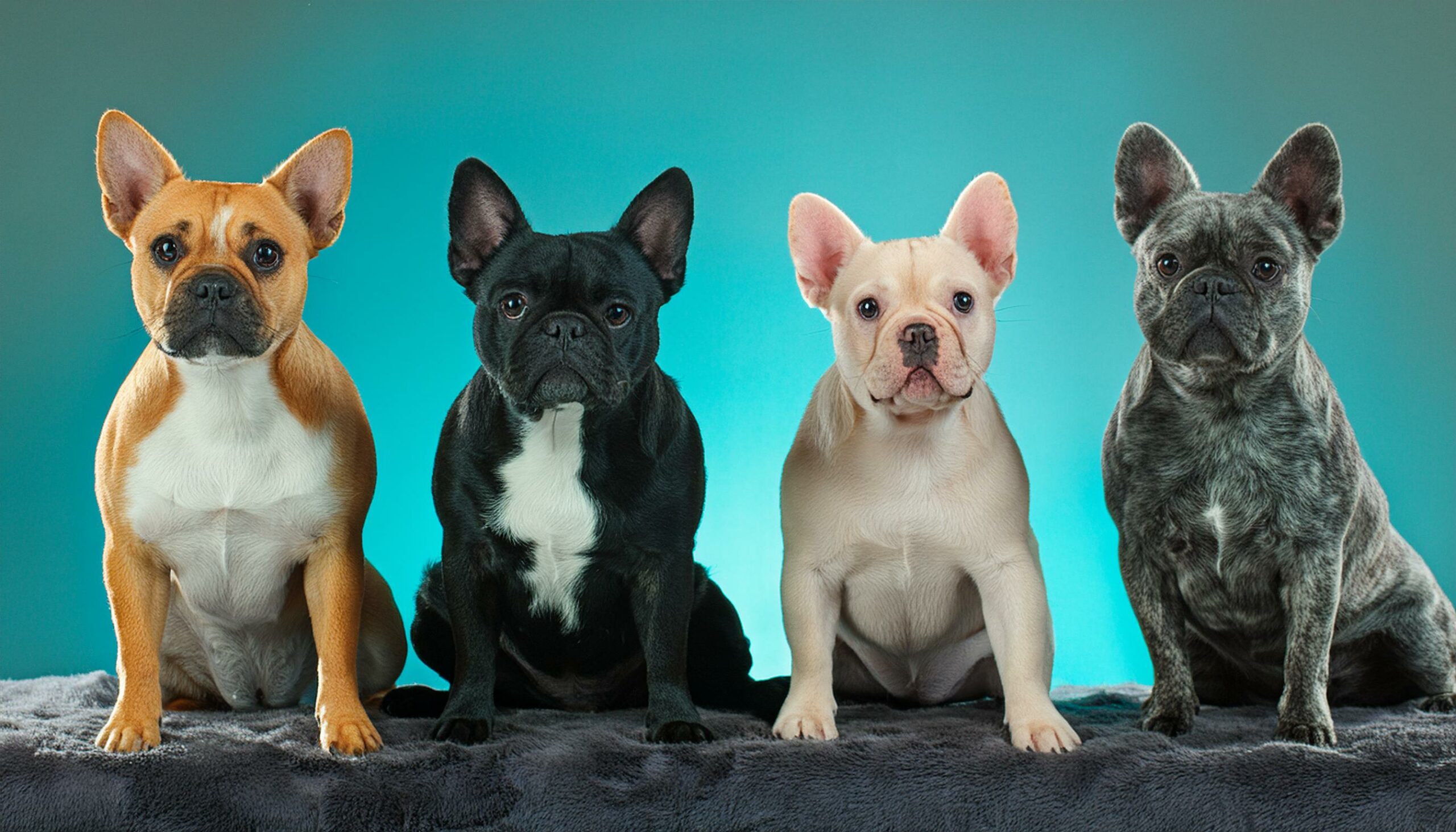French Bulldogs, also known as Frenchies, are beloved for their affectionate nature and distinctive appearance. With their bat-like ears and expressive faces, they have captured the hearts of dog lovers worldwide. Beyond their charming personality, French Bulldogs come in a variety of coat colors, ranging from common to rare. In this article, we will explore the intriguing world of French Bulldog colors and uncover which hues are the most expensive.
Understanding Color Genetics in Frenchies
Basic Coat Colors
French Bulldogs typically come in standard coat colors recognized by kennel clubs, including fawn, brindle, white, cream, and pied. These colors are commonly seen and tend to be more readily available compared to their rarer counterparts.
Rare Coat Colors
In addition to the standard hues, Frenchies can exhibit rare coat colors due to genetic variations. These include blue, lilac, and merle. These rare colors are highly sought after by enthusiasts and collectors due to their uniqueness and scarcity.
Factors Influencing French Bulldog Prices
Several factors contribute to the pricing of French Bulldogs, with color being a significant determinant.
Rarity of Color
The rarity of a French Bulldog’s coat color plays a crucial role in determining its price. Colors such as blue, lilac, and merle are considered rare and often fetch higher prices due to their scarcity in the breeding pool.
Breeder Reputation
The reputation of the breeder also influences the price of French Bulldogs. Reputable breeders who adhere to ethical breeding practices and produce high-quality, healthy puppies typically charge premium prices for their dogs, regardless of color.

Bloodline and Pedigree
The lineage of a French Bulldog, including its bloodline and pedigree, can impact its price. Dogs from champion bloodlines or with exceptional pedigrees may command higher prices, irrespective of their coat color.
Most Expensive French Bulldog Colors
Blue Frenchies
Blue French Bulldogs, characterized by a dilute grayish-blue coat, are among the most expensive color variations. The blue coloration is the result of a recessive gene inherited from both parents, making blue Frenchies relatively rare and highly coveted among enthusiasts.
Lilac Frenchies
Lilac French Bulldogs feature a diluted chocolate coat with a hint of lavender, giving them a unique and luxurious appearance. Like blue Frenchies, lilac French Bulldogs are prized for their rarity and often command premium prices in the market.
Merle Frenchies
Merle French Bulldogs exhibit a mottled or blotchy coat pattern with patches of color against a lighter background. The merle gene responsible for this pattern can produce striking variations, making merle Frenchies highly desirable among collectors willing to pay top dollar for these distinctive markings.
Pricing Variations Within Colors
While certain colors may generally command higher prices, there can be variations in pricing within each color category. Factors such as lineage, markings, and demand can influence the price of a French Bulldog, regardless of its coat color.
Popularity versus Rarity: Impact on Prices
The popularity of certain French Bulldog colors can fluctuate over time, affecting their market value. Colors that were once considered rare may become more prevalent due to increased breeding efforts, leading to a decline in their exclusivity and, consequently, their price.
Tips for Buying a French Bulldog
Before purchasing a French Bulldog, it’s essential to consider the following tips:
- Research Breeders Thoroughly: Look for reputable breeders with a history of ethical breeding practices and a commitment to the health and well-being of their dogs.
- Ask for Health Certifications: Request health certifications for the puppy and its parents, including screenings for common health issues such as hip dysplasia and brachycephalic syndrome.
- Consider Adoption: Explore adoption options through rescue organizations and shelters to give a loving home to a Frenchie in need while potentially saving on costs.
Conclusion
In conclusion, the price of a French Bulldog can vary significantly depending on factors such as coat color, rarity, breeder reputation, and lineage. While blue, lilac, and merle Frenchies tend to be among the most expensive colors due to their scarcity and unique aesthetics, pricing variations exist within each category. Regardless of color, prospective French Bulldog owners should prioritize responsible breeding practices and thorough research to ensure a happy and healthy companion.
Unique FAQs
Are rare-colored French Bulldogs more prone to health issues?
While rarity of color does not directly correlate with health issues, it’s essential to prioritize health screenings and genetic testing regardless of coat color to ensure the well-being of your Frenchie.
Can I show a French Bulldog with non-standard colors in dog competitions?
Most major kennel clubs have strict standards regarding coat colors for conformation shows, which may exclude non-standard colors such as blue or lilac. However, French Bulldogs of any color can participate in other dog sports and activities.
Do French Bulldogs with rare colors have different temperaments?
Coat color does not inherently affect a French Bulldog’s temperament. However, reputable breeders prioritize temperament alongside physical traits, ensuring that puppies of all colors exhibit the breed’s characteristic friendly and affectionate nature.
Are there any ethical concerns associated with breeding rare-colored French Bulldogs?
The breeding of rare-colored French Bulldogs can raise ethical concerns, particularly if it involves excessive inbreeding or prioritizes color over health and temperament. Responsible breeders prioritize the overall well-being of the dogs and adhere to ethical breeding practices.
What is the average lifespan of a French Bulldog regardless of coat color?
French Bulldogs typically have a lifespan of around 10 to 12 years, regardless of their coat color. However, factors such as genetics, diet, exercise, and healthcare can influence individual lifespan.
